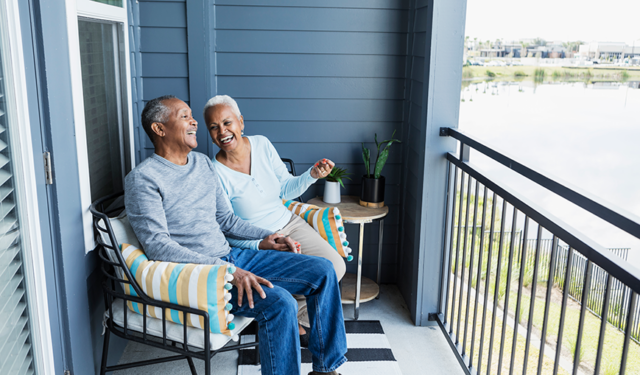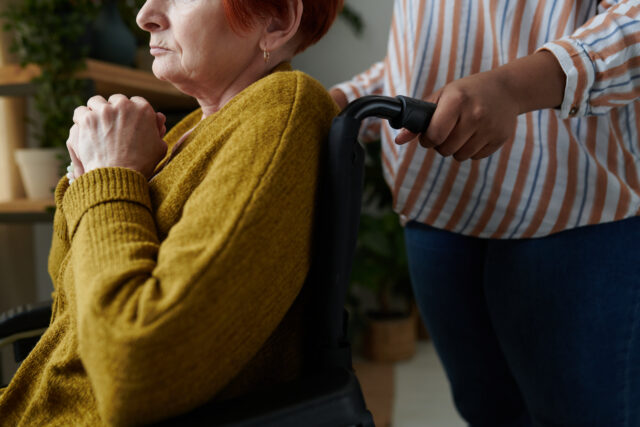
A Model for Elder Care? Supported Housing Offers Some Hope for the Future
Much of what I’ve been writing about lately are the dire prospects for elder care when the oldest baby boomers begin reaching their late 80s within a decade. The challenges we will face are exacerbated by the physical design of our communities based on single-family homes scattered around the suburbs. This leads to the isolation of seniors, especially when driving becomes difficult and older adults can become confined to their homes. It can also make it expensive to provide services in their homes as home care workers, visiting nurses, and other providers must travel relatively long distances to serve their clients.
Fortunately, there’s an alternative. In my latest Risking Old Age in America podcast, Lizbeth Heyer, President of 2Life Communities in greater Boston, describes their supported housing model for seniors that provides affordable housing with coordination of services, enabling residents to continue living in their communities as their needs increase.
Comprehensive Living Environment

Heyer explains that their model is based first on affordable housing with separate apartments for all residents, including a full kitchen, which allows for independence. In addition, all the units are fully adaptable so that no one has to leave because their physical needs increase.
The communities provide ample programming to keep residents engaged with their neighbors. “Aging in community,” Heyer says, “addresses the epidemic of loneliness and the…horrible impacts of loneliness on older adults… We know that loneliness is harmful to physical and emotional health and that community is a tremendous antidote to that by bringing connection and purpose and joy to people’s lives.”
Solving the Cost Problem
Heyer points out that Massachusetts has the highest level of economic insecurity for seniors due to its high cost of both housing and care. It also has the highest rate of nursing home placement, which is related to costs. Often seniors have to go to nursing homes because it’s the only place they can afford to live with services, since it’s covered by MassHealth (the state’s Medicaid program).
Heyer describes the current system as like a barbell. Solutions exist for extremely low-income seniors and for those who can afford market rate services but not for the vast majority of seniors in the middle until they spend down and qualify for MassHealth.
Heyer noted that there are two crises in the home care industry: workforce and costs. It costs about $35 an hour to pay for home care privately. Often seniors have to buy services in four-hour increments even if they only need a half hour of assistance…In a 2Life community, they simply pay for the help they need.
2Life Communities help solve the workforce problem since fewer care workers can see more people. It also relieves stress on the workers. Often when they are providing in-home care, they can be the only person the senior sees during a week, adding to their responsibilities – in contrast to working as part of a team in a larger community.
Different from Assisted Living
Heyer distinguishes their apartments from assisted living, where residents often don’t have a full kitchen and must go to a community dining room for all meals, meaning that they lose the agency to cook and live independently. The base cost of assisted living is expensive and typically only covers an hour a day of care. If the resident needs more, they have to pay for it on their own. Often the care becomes unaffordable, resulting in residents ultimately moving to a nursing home.
Each of 2Life’s seven communities has resident services managers that work with individuals to make sure they receive the services they need. The managers draw on a deep knowledge of both the subsidies and services available in Massachusetts, information that families of seniors often struggle to obtain.
Meeting a Growing Need
Unfortunately, 2Life Communities has about 8,000 people on its waiting lists as compared to its 2,000 current residents, but their capacity continues to grow. 2Life is also advocating to expand affordable housing generally and for policy changes that make it easier to integrate services into the senior community. Heyer stresses the need to dramatically increase resources for affordable senior housing, primarily through expanding rental voucher programs and better coordinating Medicare and Medicaid with housing. Proposals to expand Medicare to cover home health care (such as suggested by Vice President Kamala Harris last year) could ultimately save the health care system money because the lack of covered care often results in rehospitalization of patients after discharge and longer hospital stays.
Changing Mindsets
We live in a society that defines success as staying in your home as long as possible. Heyer says “We need to change that narrative. Choosing to age at home often means choosing loneliness. Choosing to move into a community setting is not only a better economic choice. It’s a choice to…[achieve] wellness through the kinds of social interaction and joy that you can get from…sharing your life with other people.”
For more from Harry Margolis, check out his Risking Old Age in America blog and podcast. He also answers consumer estate planning questions at AskHarry.info. To stay current on the Squared Away blog, join our free email list.






